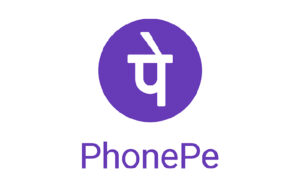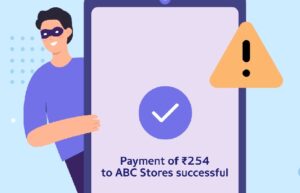What Is Phonepe?

PhonePe is a popular digital payments platform based in India that allows users to make UPI payments, recharges, money transfers, and other financial transactions directly from their smartphones. Founded in 2015, it was acquired by e-commerce giant Flipkart in 2016. Through the PhonePe app, people can send and receive money, pay bills and merchants, recharge phones, make DTH payments, book movie/travel tickets, and more using Unified Payments Interface (UPI). It has integrated various UPI payment options like BHIM, Axis Pay, and Free Charge Pay into its interface for easy fund transfer between banks. Users can pay anyone with a valid UPI ID linked to their bank account with just a few clicks. PhonePe does not charge any fees for fund transfers between users. Its user-friendly app and fast, secure transactions have helped it grow into one of India’s largest UPI payment platforms, with over 100 million consumers using it for daily monetary needs.
Frauds Happening On Phonepe
PhonePe, a leading UPI payment platform, has unfortunately also seen increasing financial frauds perpetrated by cybercriminals. Some common types of PhonePe fraud reported include SIM swap fraud, phishing fraud, and unauthorized transactions. In a SIM swap fraud, criminals social engineer mobile operators port the victim’s number to a new SIM under the fraudster’s possession, enabling them to bypass account security. Phishing fraud occurs when users are tricked into sharing sensitive financial details like UPI PIN, OTPs, etc., via fake SMSes or links. Unauthorized transactions happen when hackers secretly access accounts and transfer funds without consent. There have also been complaints of duplicate accounts being created under the victim’s name to siphon money. While PhonePe takes necessary safety precautions, users must remain vigilant against social engineering tactics. Strong passwords, two-factor authentication, and monitoring transaction alerts can help prevent the unauthorized draining of one’s bank balance linked to the PhonePe account.
Fake Screenshot Transaction Fraud

Amit received a message from an unknown number claiming to be from PhonePe customer support. The message said there had been a failed transaction attempt on his account and asked him to confirm some details for verification. It also included a screenshot of an alleged failed transaction. However, when Amit logged into his actual PhonePe app, he saw no record of any such transaction. That’s when he realized he must be a victim of the ‘fake transaction screenshot’ fraud. In this scam, fraudsters create fake transaction screenshots showing money debits and share them with messages asking users to confirm details by clicking on malicious links or sharing account credentials like UPI PIN. Once users fall for this and share sensitive information, their real money gets debited unauthorizedly via the victim’s app. Always be wary of unsolicited messages with transaction images. Never click links or disclose details to unknown numbers claiming to be from your bank or digital wallet. Always verify directly through legit apps or official websites.
Awareness Of Fake And Real Transaction
PhonePe users need to be aware of the differences between fake and accurate transactions to avoid falling prey to fraud. In an actual transaction on the PhonePe app, the user will initiate the payment themselves after correctly entering the recipient’s details like UPI ID, amount, etc. They will also receive an OTP to confirm the transaction. The transaction will then appear instantly in the app’s history. However, in case of a fake transaction, the user does not perform any payment on their own. The fraudulent activity often comes in unsolicited messages, with images of fake transaction screens showing money debits without consent. Authentic transactions also show appropriate merchant names if paying businesses. Fake ones will have vague or suspicious details. Further, in a real payment, a sufficient balance will be deducted immediately, whereas fraudsters may show implausible debits of the entire account balance in one go through fabricated screens. Staying alert to these subtle differences can help users avoid financial losses.
Stay safe and save ourselves from frauds

In today’s digital world, it’s crucial to prioritize our safety and protect ourselves from fraud. Fraudulent activities can range from identity theft to financial scams, and it’s essential to stay vigilant and take precautions to safeguard our personal information and financial well-being.
To stay safe from fraud, it’s important to be cautious with our personal information. Avoid sharing sensitive details, such as Social Security numbers, bank account information, or passwords, unless it’s absolutely necessary and you are confident in the legitimacy of the request. Legitimate organizations and institutions will usually have secure methods for collecting such information.
Using strong and unique passwords is another vital step in protecting ourselves. Create passwords that are difficult to guess, incorporating a combination of letters, numbers, and special characters. It’s also essential to avoid using the same password for multiple accounts. This way, even if one account is compromised, the others remain secure.
Being cautious of phishing attempts is crucial. Phishing is a fraudulent technique where scammers try to trick individuals into revealing personal information or clicking on malicious links. Be wary of unsolicited emails, messages, or phone calls asking for personal or financial details. Verify the authenticity of the source through official channels before responding or providing any information.
Regularly monitoring our financial accounts and credit reports is also important. Review bank statements, credit card transactions, and other financial records for any suspicious activity. Check credit reports periodically to ensure there are no unauthorized accounts or inquiries.
Installing and updating security software on our devices, such as antivirus and anti-malware programs, is another essential step. These tools can help protect against viruses, malware, and other online threats.
Lastly, trust your instincts. If something feels off or seems too good to be true, it’s best to err on the side of caution. Take the time to research and verify before making any financial decisions or sharing personal information.
By staying informed, being cautious, and taking proactive measures, we can help protect ourselves from fraud and ensure our safety in the digital world.
Conclusion
As digital payment platforms become more popular and accessible, the unfortunate rise in financial frauds through mechanisms like fake transactions on PhonePe poses a severe threat. While technology helps enable convenient banking, it also opens avenues for misuse. Users must remain educated on the modus operandi of such scams and wary of unsolicited communications. At the same time, companies like PhonePe are responsible for continuously bolstering security features, quickly acting on fraud reports, and creating awareness. Strong customer verification, monitoring anomalous activity, and coordination with law agencies can help curb these crimes. However, prevention begins with each individual adopting basic precautions like not sharing sensitive details, verifying transactions through legitimate apps, and reporting any fraud immediately. With collective efforts, the goal is to make such digital platforms safe and trusted to empower digital financial inclusion.
